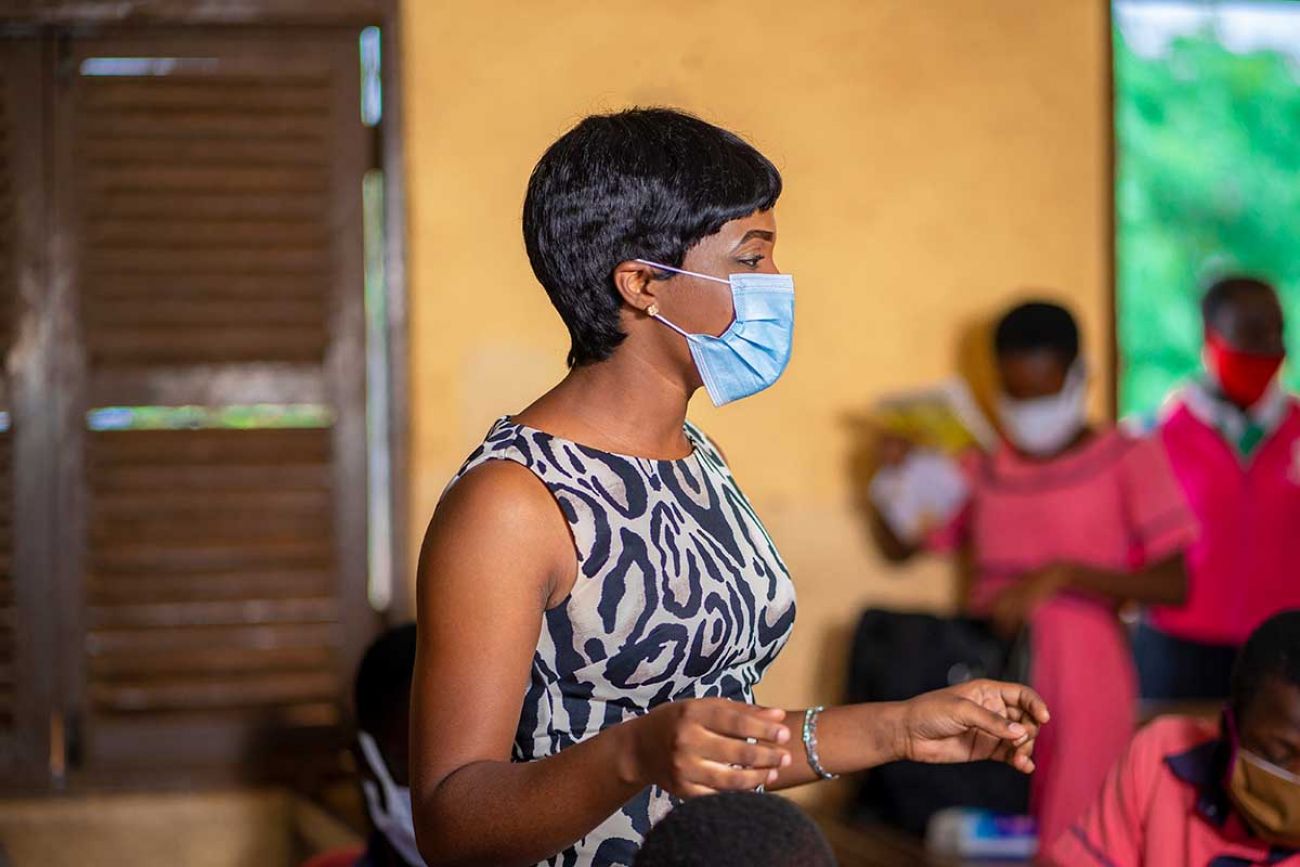Michigan teachers got COVID vaccines early, students now stand to benefit

Michigan’s decision to move educators near the front of the vaccine line is appearing to pay off: Nearly two-thirds of teachers have already received at least one dose of the COVID vaccine, or are on schedule to get it, according to an informal survey of over 22,000 Michigan teachers.
That’s good news for teachers worried about getting sick and for parents waiting impatiently for their children to return to classrooms. Some school districts say teacher vaccinations are paving the way for more face-to-face instruction ahead of Gov. Gretchen Whitmer’s plea for schools to offer in-person classes by March 1.
In Ingham County, for instance, the availability of teacher vaccinations has nudged some districts to set reopen dates, according to Jason Mellema, superintendent of the Ingham Intermediate School District.
“I believe all of our educators who are interested should have an opportunity to get at least a first shot in February, which is incredible,” Mellema said. “I think we’re over the hump.”
As of mid-January — 10 months after the first COVID-19 cases were discovered in Michigan — 35 percent of the state’s traditional public school districts and charter schools, enrolling more than 500,000 students, did not offer an option for in-class instruction.
Some districts reopened classrooms in late January, when many began a new semester. Still, there are numerous districts that remain entirely virtual, including in Lansing and Ann Arbor. Some still have not set firm dates for reopening, despite plummeting infection and hospitalization rates across the state.
The Michigan Department of Health and Human Services on Jan. 11 included teachers as one of the first groups eligible to receive vaccinations, along with people age 65 and over and other essential frontline workers. While there isn’t official data on educator vaccination rates, a recent survey by the state’s largest teacher union offers encouraging signs.
The Michigan Education Association said the survey, taken from Feb. 2-8, showed half of the respondents had received one dose of the two-dose vaccine regimen. Six percent have had both doses and another 7 percent have an appointment to get the vaccine.
That puts Michigan teachers ahead of their peers nationally: Roughly 18 percent of educators across the country have been vaccinated, according to the National Education Association, which represents over 3 million teachers and other educators and staff.
The difference: the Whitmer administration prioritized getting shots in the arms of teachers as a way to help schools reopen, while many other states have not.
“Our members see the vaccine as a critical component to reopening classrooms across the state, along with continued mitigation measures like masks, social distancing and sanitization,” MEA President Paula Herbart said in a statement.
Rates vary widely in Michigan
Yet across Michigan there are big differences in teacher vaccination rates, the MEA survey shows. Over 70 percent of responding teachers in some counties say they’ve received or are scheduled to receive the vaccine, including educators in populous Wayne and Kent counties, homes to Detroit and Grand Rapids.
But teachers in some other counties report far lower rates, including just 25 percent of teachers in Washtenaw County and 32 percent in Kalamazoo County. The problem may be what has hampered the overall vaccination rollout across the country: getting enough doses.
“We have struggled with supply to do large numbers of teachers,” said Susan Ringler-Cerniglia, spokesperson for the Washtenaw County Health Department. “They are eligible and we are scheduling, but it’s a slow go.”
The MEA survey arrives three weeks ahead of the date Whitmer set for all Michigan school districts to offer an option of face-to-face instruction, a move that has created friction among some administrators and teachers who remain leery of returning to class amid a pandemic.
Whitmer’s March 1 target date is a request — districts can still decide to stay remote. But it reflects a growing consensus that it’s imperative to get students back in school. President Biden also has pushed for face-to-face instruction amid mounting evidence that in-class learning has not led to a major spread of the coronavirus when basic safety protocols (hand-washing, social distancing, etc.) are followed.
A Michigan State University study, for instance, found in-person instruction is not linked to an increase in COVID-19 cases when there are low levels of virus cases in the community, but that schools can increase the spread when case numbers are high.
Michigan coronavirus cases have been in steady decline since the beginning of January. On Tuesday, the state reported just 563 new coronavirus infections, the lowest number since mid-September, before a second wave of infections swept the state.
Yet despite studies, lower case and hospitalization counts and increasing vaccinations, many teachers remain wary: The MEA survey showed nearly 80 percent remained “somewhat concerned” or “very concerned” about the virus, which is confirmed to have taken the lives of nearly 15,000 people in Michigan.
COVID also has been labeled a factor in a rise in teacher retirements, in a state already suffering a teacher shortage.
These fears have pitted some teachers — and their unions — against district leaders and parents who have sought a return to the classroom.
In Ann Arbor, which has remained all remote for the school year, parent Mike Shriberg said school officials should consider not just the health risk of being in school, but the physical and mental health strain on students from not having contact with teachers and peers.
This week, more than 300 doctors and academics signed a petition calling for the Ann Arbor district to offer in-person classes.
“There is no substitute for face-to-face (instruction) and it can be done safely,” Shriberg said.
Vaccines may end logjam
As vaccination rates rise, some school boards and teachers appear more willing to agree to face-to-face instruction, said Sarah Reckhow, an associate professor of political science at Michigan State University who is studying school reopening plans.
In Ingham, where her own children attend East Lansing schools, Reckhow said districts have started making plans to offer in-person classes and the high rate of teacher vaccinations played a role.
“It really changed the debate locally,” she said. “It didn’t melt away all the opposition and concern,” but it did open the door to making in-person class “doable.”
The Ingham County Health Department prioritized teachers in school districts that were already holding in-person classes, and now offers vaccination appointments for educators in districts that have set reopening dates.
Holt Public Schools, south of Lansing, set a reopening date of March 15 at a school board meeting Monday, with hopes its educators can get shots before then.
Nearby Haslett Public Schools opened its high school and middle school classrooms under a hybrid model on Monday, for the first time this school year. Making that choice easier: two-thirds of teachers have at least one shot, and the other third are expected to receive theirs by mid-February.
“Our goal is to get students back full-time,” said Haslett Superintendent Steve Cook. “Vaccinations are a step in that direction.”
‘A level of comfort’
Even in districts that never shut their doors, the vaccine has been welcome. Although a third of the front-line staff in the Cadillac schools opted not to get the vaccine, all of those who did have had at least one dose, said Superintendent Jennifer Brown.
The 3,100-student district has had face-to-face learning through the school year, save for the suspension on high school classes ordered by Whitmer in November. Parents have been able to opt for virtual instruction, Brown said.
“Our staff certainly was concerned about the risks (of COVID-19) but they remain committed (to providing instruction),” Brown said. “Our staff never wavered in meeting the student needs in our community. They were great.”
Brown said there have been 20 confirmed COVID infections among the front-line staff — including teachers, aides, bus drivers and others with close student contact.
The district will continue to require masks for students and staff and other restrictions will remain, despite vaccines, she said.
“It will just be a level of comfort and security for our staff that there’s another layer of protection,” she said.
Michigan Education Watch
Michigan Education Watch is made possible by generous financial support from:
Subscribe to Michigan Education Watch
See what new members are saying about why they donated to Bridge Michigan:
- “In order for this information to be accurate and unbiased it must be underwritten by its readers, not by special interests.” - Larry S.
- “Not many other media sources report on the topics Bridge does.” - Susan B.
- “Your journalism is outstanding and rare these days.” - Mark S.
If you want to ensure the future of nonpartisan, nonprofit Michigan journalism, please become a member today. You, too, will be asked why you donated and maybe we'll feature your quote next time!






